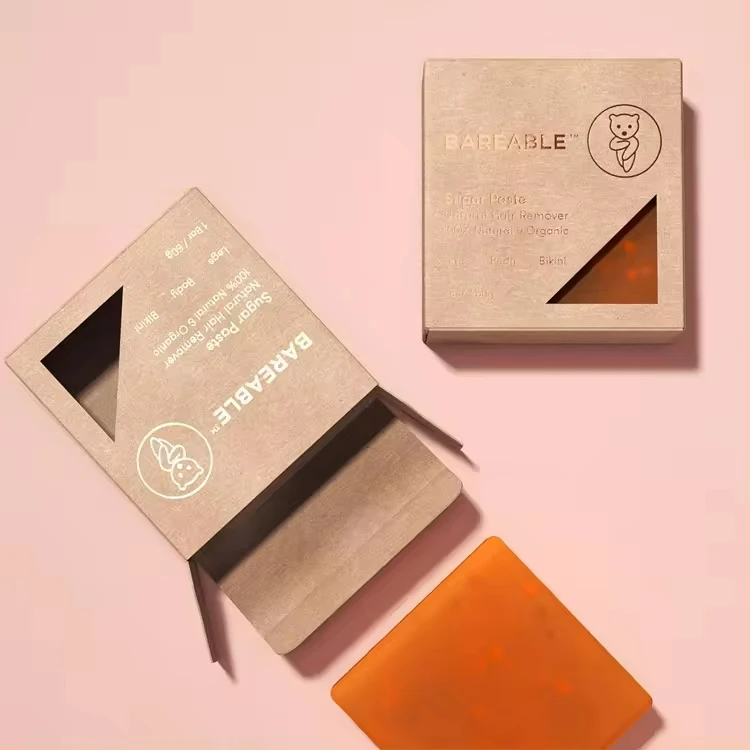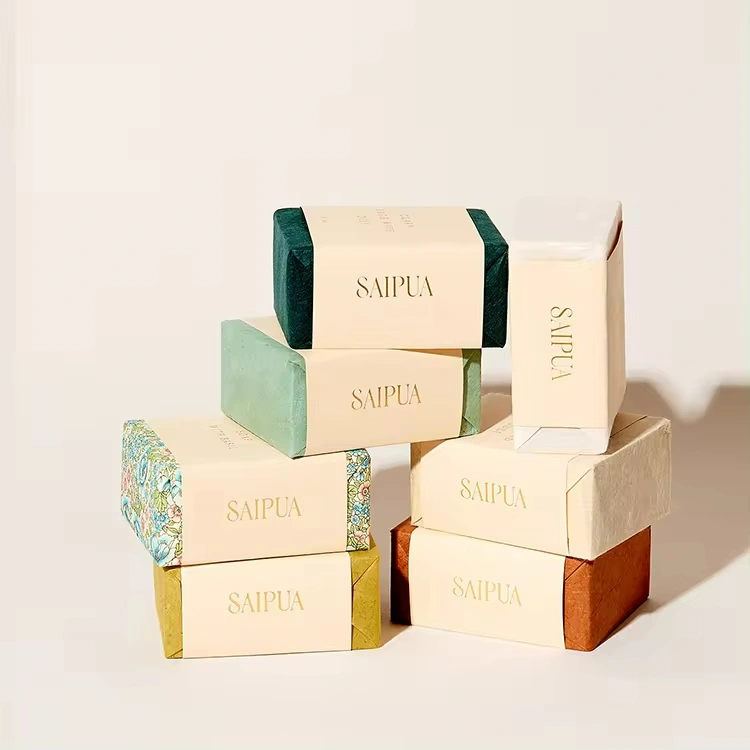In the realm of soap businesses, packaging isn’t just about enclosing a product; it’s a canvas to showcase creativity, values, and brand identity. Crafting remarkable soap packaging requires a blend of artistry, functionality, and strategic thinking. In this comprehensive guide, we’ll delve into a myriad of ideas to revolutionize soap packaging, from essential elements to eco-friendly solutions, creative embellishments, and considerations for premium products. Let’s embark on a journey to unveil brilliance in soap packaging.
1.5 Key Elements of Effective Soap Packaging
Effective soap packaging should incorporate the following key elements to captivate consumers and enhance brand perception:
- Visual Appeal: Use captivating visuals, colors, and graphics to grab attention and entice customers to pick up your product.
- Durability: Ensure that your packaging is sturdy and durable to protect the soap from damage during shipping and handling.
- Differentiation: Set your brand apart by creating packaging that is unique, memorable, and reflective of your brand’s personality.
- Functionality: Make it easy for customers to access and use the soap by designing packaging that is practical and user-friendly.
- Consistency: Maintain consistency in packaging design across different soap variants to reinforce brand identity and build brand recognition.
2. Why You Should Choose Eco-Friendly Soap Packaging
Choosing eco-friendly soap packaging is not just a trend—it’s a commitment to sustainability and environmental responsibility. Here are a few reasons why opting for eco-friendly packaging is beneficial for your homemade soap business:
- Environmental Impact: Traditional packaging materials, such as plastic, contribute to pollution and harm the environment. Eco-friendly packaging, on the other hand, is made from renewable or recycled materials and is biodegradable or compostable, reducing your carbon footprint.
- Consumer Preference: Today’s consumers are increasingly conscious of their environmental impact and seek out products that align with their values. By choosing eco-friendly packaging, you appeal to environmentally conscious consumers and differentiate your brand in the market.
- Brand Image: Packaging is often the first point of contact between your product and potential customers. Eco-friendly packaging conveys a positive brand image, showcasing your commitment to sustainability and attracting environmentally conscious consumers.

3. Types for Soap Packaging
Boxes made from recycled paperboard or cardboard are an excellent eco-friendly packaging option for homemade soap. These boxes offer protection for your soap during transit and storage while minimizing environmental impact. Choose boxes with minimal or recyclable packaging materials for an even greener solution.
Fabric bags made from organic cotton, hemp, or linen are a sustainable and stylish packaging choice for homemade soap. These reusable bags not only protect your soap but also add a touch of luxury to your product presentation. Consider adding a drawstring closure for added convenience and aesthetics.
- Custom Sleeves:
Biodegradable paper sleeves made from recycled materials are an eco-friendly alternative to plastic wrapping for soap bars. These sleeves provide protection and branding opportunities while minimizing waste. Customize the sleeves with your brand logo or design for a personalized touch.
Choosing eco-friendly soap packaging is not only beneficial for the environment but also for your brand’s image and consumer appeal. By opting for sustainable packaging options such as boxes, bags, and sleeves made from recycled or renewable materials, you can showcase your commitment to sustainability while presenting your homemade soap in an attractive and environmentally responsible manner. Embrace eco-friendly packaging solutions and make a positive impact on both your business and the planet.

4. Add Some Wow Factor to be Creative with Ideas for Soap Packaging
- Tissue Wrapping
Wrap your homemade soap bars in custom-printed tissue paper featuring your brand logo or unique designs. This simple yet effective packaging solution not only protects your soap but also adds an element of sophistication and elegance to your product presentation. Choose recycled or eco-friendly tissue paper to align with your sustainability goals.
- Dried Botanicals
Incorporate dried botanicals such as lavender, rose petals, or calendula into your soap packaging to add a natural and visually appealing touch. These botanicals not only enhance the aesthetic appeal of your products but also provide a sensory experience for your customers. Ensure that the botanicals are sustainably sourced and biodegradable to maintain your eco-friendly packaging ethos.
- Logo Stamps
Personalize your soap packaging with custom logo stamps made from eco-friendly materials like rubber or wood. Stamp your logo onto paper sleeves, bags, or boxes to create branded packaging that reflects the identity of your business. Logo stamps add a unique and artisanal touch to your packaging while reducing the need for additional printing materials.
- Logo Stickers
Opt for biodegradable or compostable stickers printed with your logo to seal your soap packaging. These stickers not only secure your packaging but also serve as a branding opportunity to reinforce your brand identity. Choose eco-friendly sticker materials and printing techniques to minimize environmental impact.
- Custom Brand Labels
Invest in custom brand labels made from recycled paper or eco-friendly materials to adorn your soap packaging. These labels can include product information, ingredients, and branding elements, enhancing the overall presentation of your soap products. Custom brand labels add a professional and polished look to your packaging while demonstrating your commitment to sustainability.
- Wooden Logo Tags
Add a rustic and natural element to your soap packaging with wooden logo tags engraved with your brand name or logo. These wooden tags can be attached to fabric bags, paper sleeves, or boxes to provide a unique and tactile branding experience for your customers. Wooden logo tags are durable, reusable, and biodegradable, making them an eco-friendly packaging option.
- Burlap Ribbon or Twine
Finish off your eco-friendly soap packaging with burlap ribbon or twine for a rustic and eco-conscious touch. These natural fibers add texture and visual interest to your packaging while complementing the earthy aesthetic of homemade soap products. Choose biodegradable or compostable ribbon options to maintain your commitment to sustainability.

5. Factors To Consider in Packaging Premium Soaps
We understand there are various product position, and for those soap business owner who want to target the luxury market, there are something more. Crafting premium soap packaging requires attention to detail and a keen understanding of your target audience’s preferences. When it comes to packaging luxury soaps, several factors need to be considered to ensure that your product stands out and reflects the quality of your brand:
- Materials: Choose high-quality packaging materials such as thick paperboard, specialty papers, or fabric wraps to convey a sense of luxury and sophistication.
- Design: Invest in professional design services to create packaging that is visually striking and aligned with your brand identity. Consider embossing, foil stamping, or intricate patterns to add a touch of elegance.
- Brand Story: Use packaging to tell the story of your brand and what sets your soaps apart from the competition. Incorporate elements that evoke emotions and connect with your target audience.
- Functionality: While aesthetics are important, ensure that your packaging is practical and functional. It should protect the soap from damage during transit and storage while enhancing the overall user experience.
- Sustainability: Consider eco-friendly packaging options to appeal to environmentally conscious consumers. Choose materials that are recyclable, biodegradable, or reusable to minimize environmental impact.
6. One Bonus Tips: Information Found on Soap Label
The soap label is an essential component of your packaging and should contain the following information:
- Product Name: Clearly indicate the name of the soap to help customers identify it.
- Ingredients: List all the ingredients used in making the soap, especially if it contains allergens or potential irritants.
- Net Weight: Provide the net weight of the soap to comply with labeling regulations and inform customers about the quantity they are purchasing.
- Brand Logo: Display your brand logo prominently to reinforce brand recognition and credibility.
- Contact Information: Include your company’s contact information or website URL for customers to reach out for inquiries or feedback.

7. Additional Questions Around Soap Packaging
Q1: What is the primary packaging of soap?
The primary packaging of soap typically refers to the immediate layer of packaging that directly encloses the soap product itself. For most bar soaps, this primary packaging is often a material like paper, cardboard, or plastic wrap that surrounds the soap bar, keeping it clean, protected, and intact until it’s ready for use. This primary packaging is essential for maintaining the quality and hygiene of the soap and often features product information and branding elements to communicate with consumers.
Q2: What is the best packaging for melt and pour soap?
When it comes to melt and pour soap, the best packaging option depends on various factors such as the desired presentation, intended use, and branding preferences. However, one popular choice for melt and pour soap is clear plastic or cellophane wrap. Clear packaging allows the vibrant colors and intricate designs of melt and pour soap to shine through, enticing customers with its visual appeal. Additionally, clear wrap provides adequate protection while still showcasing the soap’s craftsmanship and quality. Alternatively, some soap makers may opt for biodegradable or compostable packaging options to align with eco-friendly values.
Q3: What is the best way to package cold process soap?
For cold process soap, the best way to package it is in a manner that allows for proper curing while protecting the soap from external elements. After the soap has undergone the curing process, it can be wrapped in breathable materials such as wax paper or parchment paper. These materials help to absorb excess moisture while still allowing air circulation, which is crucial for the continued curing of the soap. Once wrapped, cold process soap can be further protected by placing it in a cardboard box or airtight container to shield it from dust, light, and humidity until it’s ready for use. Additionally, labeling the packaging with relevant product information, ingredients, and branding details can help attract customers and communicate the soap’s unique qualities.
